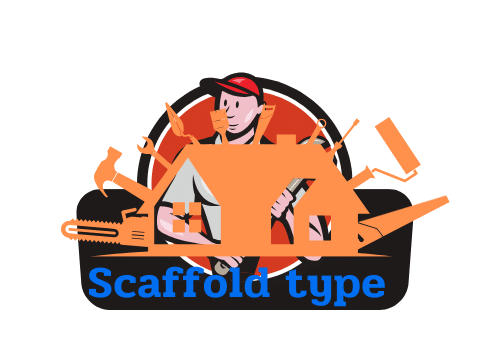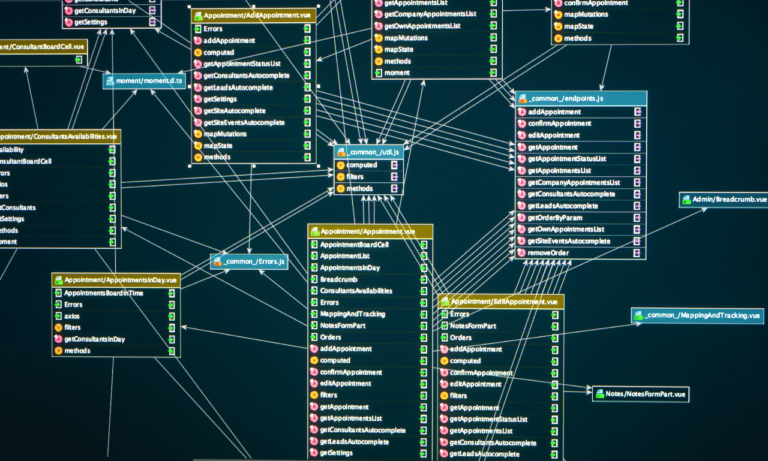Phone:
(+65)8319-0742
In today’s rapidly evolving educational landscape, empowering instructional methods are setting new standards for how we approach learning and teaching. These progressive educational strategies prioritize the individual, harnessing learner-centered approaches to cultivate an environment where student engagement strategies thrive. Through active learning strategies, educators are able to connect with students on a deeper level, fostering an inclusive classroom atmosphere that values every student’s unique circumstances and learning needs.
Effective teaching techniques now transcend traditional paradigms, moving towards more dynamic and innovative teaching methods that not only impart knowledge but also inspire confidence and independence in learners. Embracing this shift means acknowledging that educational empowerment is not just about passing exams; it’s about equipping students with the tools they need to navigate and succeed in all aspects of life.
The journey towards reshaping the educational experience is a collaborative one, wherein both students and educators contribute to and benefit from these transformations. Harnessing these methodologies opens doors to a future where education is not just a stepping stone, but a lifelong companion empowering individuals towards their fullest potential.
Key Takeaways
- Empowering instructional methods prioritize individual potential, fostering educational empowerment.
- Learner-centered approaches create engaging and supportive classroom environments.
- Active learning strategies catalyze student participation and personalized educational experiences.
- Innovative teaching methods break away from the conventional, embracing flexibility and creativity.
- Student engagement strategies are key in developing self-motivated and confident learners.
- Effective teaching techniques are instrumental in nurturing a balanced and holistic educational journey.
The Role of Technology in Modern Education
Technological integration within educational settings catalyzed a paradigm shift, endorsing empowering instructional methods and facilitating learner-centered approaches. The confluence of educational technology (EdTech) and electronic pedagogy (e-Pedagogy) has democratised access and introduced novel paradigms in curriculum delivery and assessment.
Transition to Digital Resources and Tools
One significant advancement is the widespread adoption of digital resources which has propelled the narrative from rudimentary educational models to sophisticated, data-driven ecosystems. Framing this revolution, platforms like StudyGleam have streamlined operational efficiencies. More importantly, they have kindled a drive for digital literacy in both students and educators, who now navigate an ever-evolving digital terrain.
Enhancing Engagement through Interactive Tech
Interactive EdTech solutions have redefined engagement paradigms, marrying the imperative of cyber wellness with enriching pedagogical experiences. This strategic amalgam facilitates immersive learning, thereby maximizing instructional impact. The palpable emphasis on a tapestry of media ensures that education remains relevant in a digital age, foregrounding learner-centered approaches and empowering instructional methods.
Technology's Impact on Teacher Training and Professional Development
In the crucible of modern educational evolution, professional development epitomizes staying abreast with emergent technological trends. Engaging in continuous growth through educational technology is now an indispensable facet of teacher training, emphasizing the significance of competencies such as data literacy and e-safety within a holistic framework of e-Pedagogy.
| Aspect | Traditional Approach | Technology-Enhanced Approach |
|---|---|---|
| Instructional Delivery | One-size-fits-all lectures | Customized digital content |
| Student Engagement | Passive listening | Interactive experiences |
| Evaluation & Feedback | Periodic and manual grading | Real-time analytics and automated feedback |
| Professional Development | Occasional workshops | Ongoing online training modules |
Understanding Empowering Instructional Methods

At the core of Empowering Instructional Methods lies a dedication to educational empowerment, where teachers create supportive environments that vitalize the inner drive and personal commitment of each student to reach their full potential. Through learner-centered approaches, educators are able to acknowledge and adapt to diverse personal circumstances, ensuring that each student receives the attention and resources they need to thrive academically and personally.
Student engagement strategies play a pivotal role in these methods, invoking a proactive culture within the classroom that not only encourages students to participate actively but also fosters mutual respect and understanding. This dynamic creates a classroom setting where effective teaching techniques can be applied to manifest genuinely personalized learning experiences.
- Flexibility in lesson plans and assessments to address individual learning needs
- Opportunities for peer teaching to enhance cooperative learning and confidence
- Tailoring instruction to mirror students’ unique circumstances and learning styles
Ultimately, these practices contribute to a well-rounded academic environment where educational empowerment through Empowering Instructional Methods becomes not just an ideology but a tangible reality, contributing to a well-rounded academic atmosphere.
Learner-Centered Approaches for Increased Engagement

Education today is undergoing a significant paradigm shift towards learner-centered approaches, putting the interests, needs, and learning styles of the student front and center. This dynamic fosters a more engaging and responsive educational environment.
Recognizing Individual Learning Styles
Every student processes information differently, and recognizing these individual learning styles is a cornerstone of learner-centered approaches. By tailoring instruction to meet these varied needs, educators can enhance student comprehension and foster an environment where all learners can excel.
Promoting Active Learning and Participation
Active learning strategies are vital for participation and engagement. Tools such as interactive whiteboards and digital quizzes turn passive listening into an active educational exchange, thereby improving students’ analytical and collaborative skills.
Implementing Project-Based Learning Techniques
Project-based learning encapsulates the essence of applied knowledge by integrating academic concepts with real-world tasks. This method not only solidifies students’ understanding but also prepares them for future challenges outside the classroom.
| Learning Approach | Benefits | Strategies for Implementation |
|---|---|---|
| Individual Learning Styles | Personalized instruction, improved academic success | Assessments to identify learning styles, differentiated teaching materials |
| Active Learning | Increased engagement, better retention | Interactive sessions, discussion groups, hands-on activities |
| Project-Based Learning | Hands-on experience, real-world problem solving | Group projects, case studies, community engagement |
Ultimately, the integration of student engagement strategies such as recognizing individual learning preferences, promoting active participation, and implementing project-based scenarios, results in a more stimulating and effective educational journey for students.
Empowering Instructional Methods: A Real-Life Impact
The potency of empowering instructional methods is not confined to theory or aspiration; it is a vibrant force in the world of education. These practices reflect in the countless educators who have chosen to transcend the walls of conventional teaching to nourish both the academic prowess and the personal development of their students. It’s within the empathetic spaces of learning environments that such methods exhibit their true capability, offering more than knowledgeâgiving life to wisdom and understanding. By accommodating the intricate lives of students and embracing learner-centered approaches, educators curate an educational landscape ripe for exploration, discovery, and growth.
In this narrative of transformation, innovative teaching methods don’t just equip students with the answers but also with the courage to ask questions, delve deeper, and challenge the status quo. Experiences like using virtual reality (VR) and augmented reality (AR) do more than just illustrate textbook conceptsâthey catapult learners into a realm where lessons become visceral experiences. Educational strategies that incorporate these technologies foster an immersive learning process that can resonate on a profound level, allowing students to customize their academic paths. With such tools, we are not only disseminating facts but also igniting the imagination and driving the wheel forward for educational empowerment.
In such a dynamic and evolving context, the commitment to cutting-edge educational strategies and student engagement strategies culminates in authentic change. Empowered educators become architects of change, agents who redefine what is possible within the classroom and beyond. This empowerment doesn’t just yield better grades; it cultivates life-long learners, critical thinkers, and contributors who are prepared to wield their knowledge with intent and purpose. Ultimately, by adopting and refining such effective teaching techniques, the quintessence of educational empowerment becomes a shared journey toward excellence, enriching the lives of students and educators alike.
FAQ
What are empowering instructional methods in education?
Empowering instructional methods are educational strategies that focus on enhancing student autonomy, engagement, and individual growth. They revolve around effective teaching techniques that foster a learner-centered environment and prioritize active learning strategies to help students realize their full potential.
How does technology play a role in modern education?
Technology is pivotal in todayâs educational landscape, offering a multitude of digital resources and tools that facilitate effective teaching and learning. Interactive tech such as e-Pedagogy and EdTech platforms like StudyGleam can greatly enhance engagement and help in the transition to digital literacy. They also play a crucial role in teacher training and professional development, focusing on areas like data literacy and cyber wellness education.
What key factors contribute to the success of empowering instructional methods?
The success of empowering instructional methods hinges on the ability to create a supportive and respectful classroom environment that caters to individual student needs, encourages active participation, and values personal commitments outside of the academic sphere. Flexibility, personalized learning, and peer teaching are critical components of this approach.
How do learner-centered approaches increase student engagement?
Learner-centered approaches increase engagement by recognizing and adapting to individual learning styles, thus allowing for instruction that resonates with each student. They also promote active participation through project-based learning and utilize technology such as interactive whiteboards to encourage collaborative and dynamic learning experiences.
Can you provide examples of project-based learning techniques?
Project-based learning techniques involve students working on real-world projects that require them to apply the knowledge acquired in the classroom. Examples include creating a business plan, designing a scientific experiment, developing a social media campaign for a social cause, or constructing a model to solve an engineering problem.
What is the real-life impact of empowering instructional methods?
The real-life impact of empowering instructional methods is manifest in educators who transcend traditional teaching boundaries to inspire academic excellence and personal development in their students. Such methods can lead to transformative learning experiences, where technology like VR and AR simulations play a role in bringing abstract concepts to life and aiding students in realizing their full potential.
What is the importance of understanding individual learning styles?
Understanding individual learning styles is crucial as it enables teachers to tailor their approaches to meet the unique needs of every student, facilitating a deeper connection with the material and a higher probability of academic success. It also aids in creating instructional methods that are inclusive and responsive to varied ways of learning.
Source Links
- https://thedailyguardian.com/empowering-educators-how-tech-is-transforming-teaching-methods/
- https://medium.com/@nclairline/revolutionizing-education-empowering-teachers-with-edtech-and-e-pedagogy-4afb7daeecac
- https://www.linkedin.com/pulse/transformative-teaching-approach-empowering-students-success-jones

















